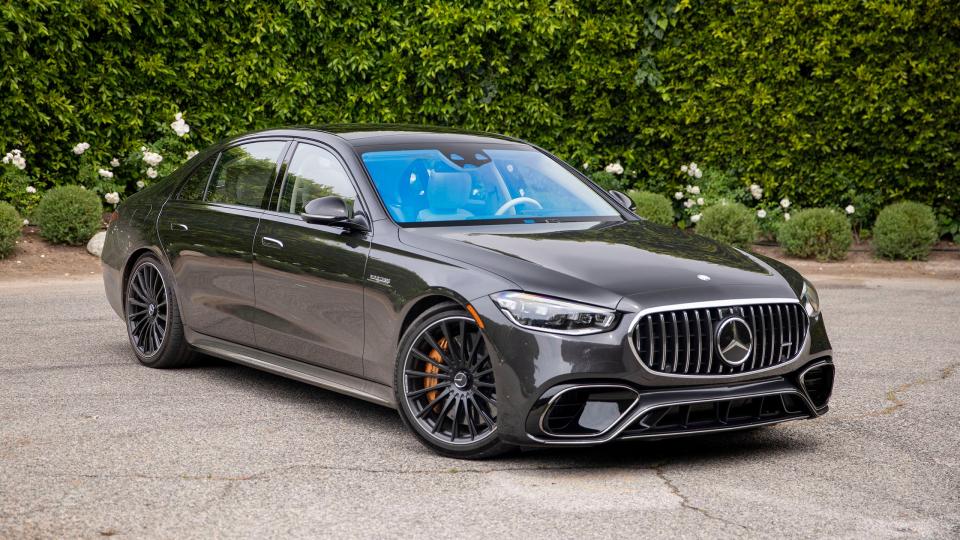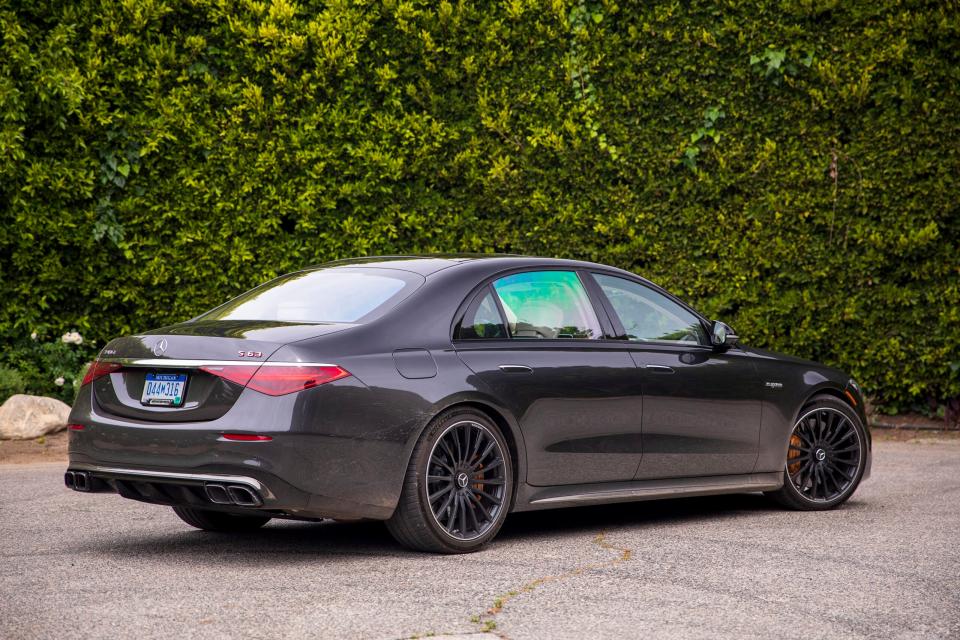2024 Mercedes-AMG S63 E Performance First Drive Review: Big Power, Big Complexities

For over half a century, the S-Class has served as a showcase of what the engineers at Mercedes-Benz are capable of. Technologies like electronic stability control, anti-lock brakes, and adaptive cruise control made their brand debut here, and the automaker’s tradition of stuffing a massive powerplant into the engine bay for a performance-tuned iteration of the sedan dates back equally as far.
While these hot-rodded models have always focused more on luxury and innovation rather than outright dynamic capability, the 2024 Mercedes-AMG S63 E Performance boasts some headline-grabbing numbers. The plug-in hybrid's peak output of 791 horsepower and 1,055 lb-ft of torque comes by way of a 603-hp twin-turbo V8 that’s paired up with an AMG-specific hybrid system that can deliver as much as 188 hp and 236 lb-ft on its own. The combination makes this not only the most powerful S-Class in history but also the most powerful roadgoing AMG sedan to date.
That power comes at a price, though, and I’m not talking about the as-yet-unannounced MSRP.

2024 Mercedes-AMG S63 E Performance Specs
Base price: TBA
Powertrain: 4.0-liter twin-turbo V8 | permanently excited synchronous electric motor | 9-speed automatic transmission | all-wheel drive
Horsepower: 791 (peak) | 697 (continuous)
Torque: 1,055 lb-ft
Seating capacity: 4
Curb weight: 5,721 pounds (European specification)
Cargo volume: 10.8 cubic feet
0-60 mph: 3.3 seconds
Top speed: 155 mph
EPA fuel economy: TBD
Quick take: A stunning concert of luxury and technology that’s held back by its own complexity.
Score: 8/10
The Basics
AMG brings a wide variety of changes to the W223 S-Class, nearly all of which focus on bolstering the sedan’s performance credentials. Visual flair is ramped up with an AMG-specific grille, a unique front fascia with larger air intakes, sportier side skirts, and a rear diffuser flanked by a quad-tip exhaust. AMG-specific alloys and red-accented badges also contribute to a noticeably more performance-oriented look, but the relatively restrained approach taken here should still allow would-be S63 E Performance owners to fly under the radar when they want to.






Inside, subtle tweaks like the AMG steering wheel, trim, and badging also provide a nod toward performance, but the S63’s cabin is still primarily a feast of lavishness that focuses on the rear passengers nearly as much as those up front. Like the standard S-Class, the S63 E Performance is outfitted with a 12.8-inch OLED touchscreen infotainment system, though here it also features real-time information about what the hybrid system is up to. AMG-themed layouts for the digital gauge cluster and head-up display can also be configured to provide a racier vibe as well as performance-related information like battery and electric motor temperatures.
What really sets the S63 E Performance apart from a standard S-Class, though, is the powertrain. Mounted to the rear axle, the hybrid system features its own two-speed gearbox as well as its own electronically controlled limited-slip differential. Paired up with a 13.1-kWh battery pack with an integrated cooling system, it offers about 20 miles of electric-only range at speeds of up to 87 mph. The battery can be recharged via a 3.7-kW onboard AC charger, but since the powertrain is constantly working to keep the battery at an ideal state of charge, owners will rarely need to do that, if ever. No less than seven drive modes can be selected from the dial on the right-hand side of the steering wheel (Electric, Comfort, Battery Hold, Sport, Sport+, Slippery, and Individual). Pressing that dial also allows you to select from four different levels of brake regen that range in strength from resistance-free coasting to one-pedal driving.


Mercedes says that by mounting the hybrid system behind the transmission (rather than sandwiching it between the engine and the transmission), the maximum amount of torque offered by both the internal combustion engine and hybrid system can be used simultaneously, which is what allows Mercedes to arrive at that lofty 1,055 lb-ft figure. The system is said to have been inspired by the ones used in Lewis Hamilton's hybrid Formula 1 cars, which are designed to deliver as-needed power frequently and repeatedly thanks to clever recuperation efforts.
This all sounds like great news for the S63’s capability, but the story gets a bit murkier when you take a closer look at what’s required to make it all work. More horsepower typically brings with it more mass in order to maintain balanced performance. You need bigger brakes to stop from greater speeds, more cooling capability to handle the additional heat produced, more chassis reinforcements to maintain proper cornering stability at high speed—you get the idea.

 Yahoo Autos
Yahoo Autos 